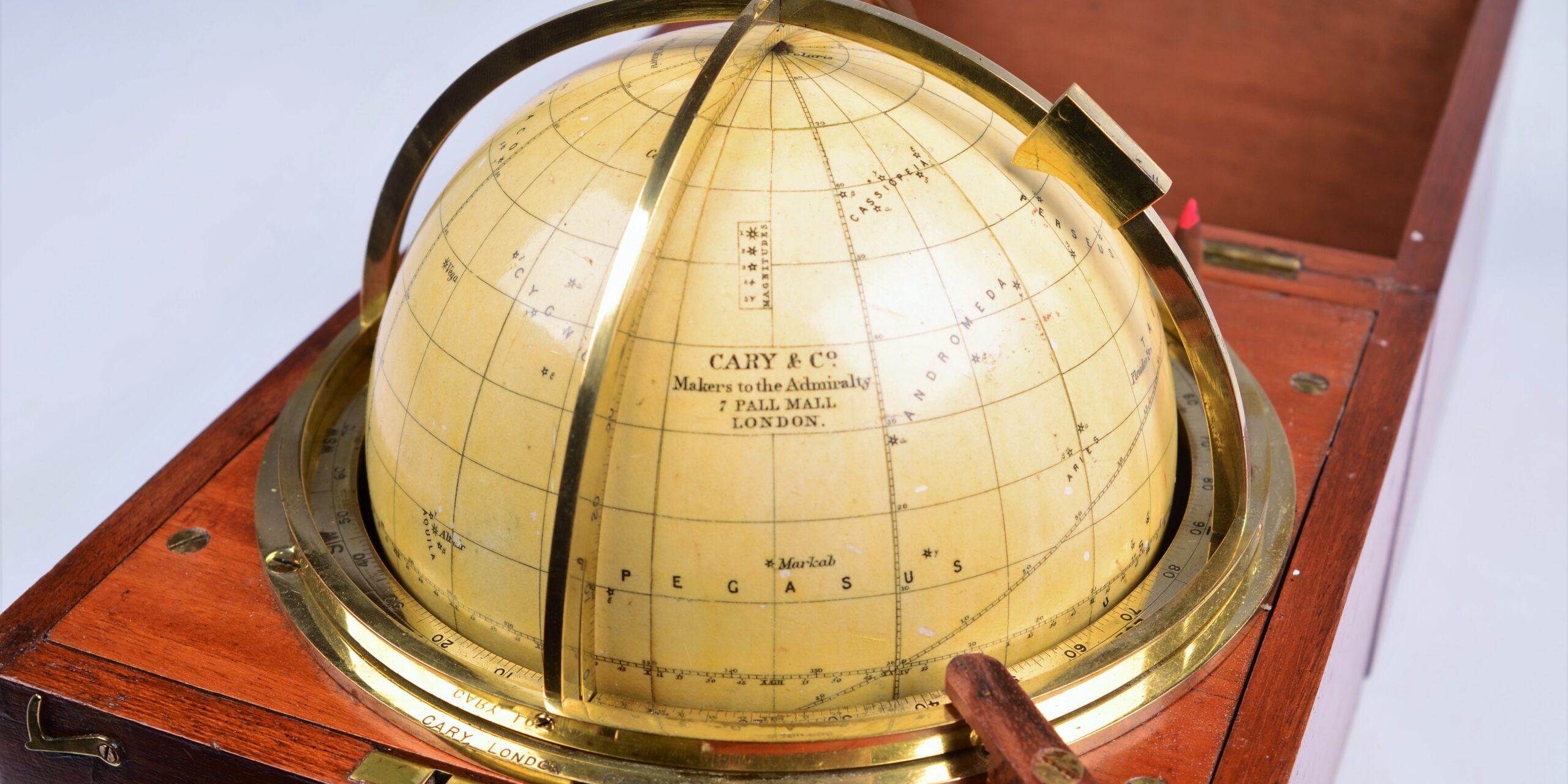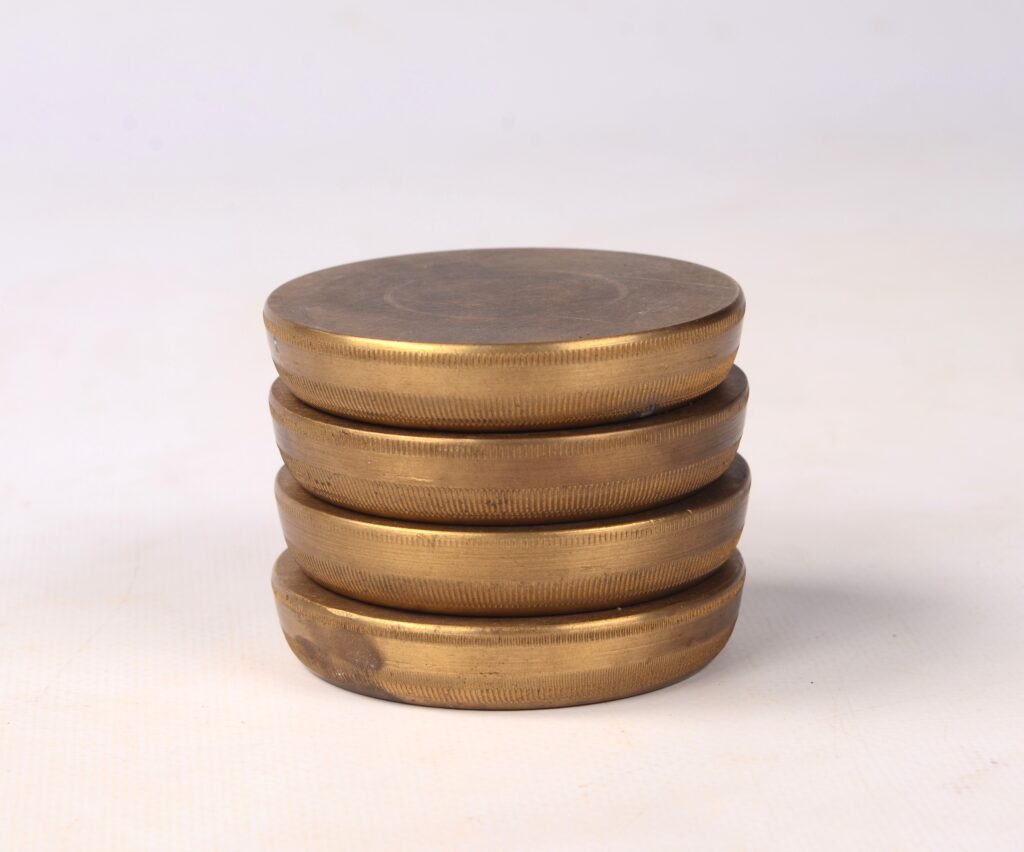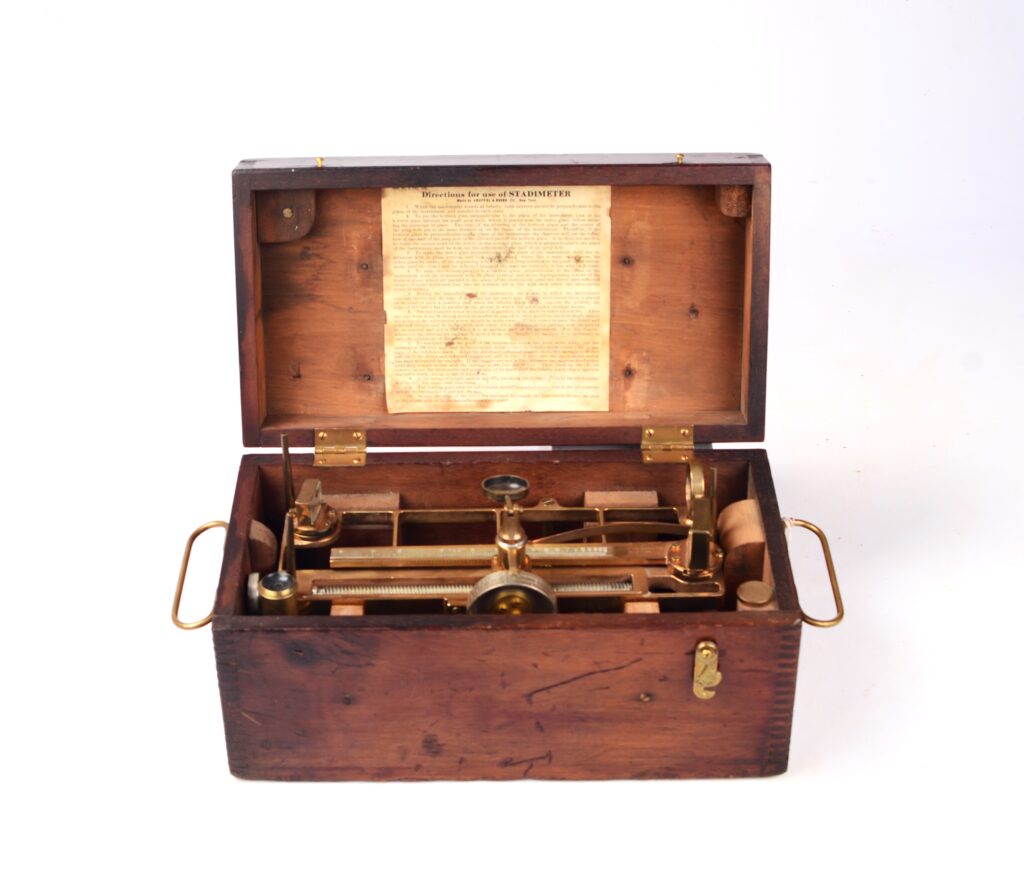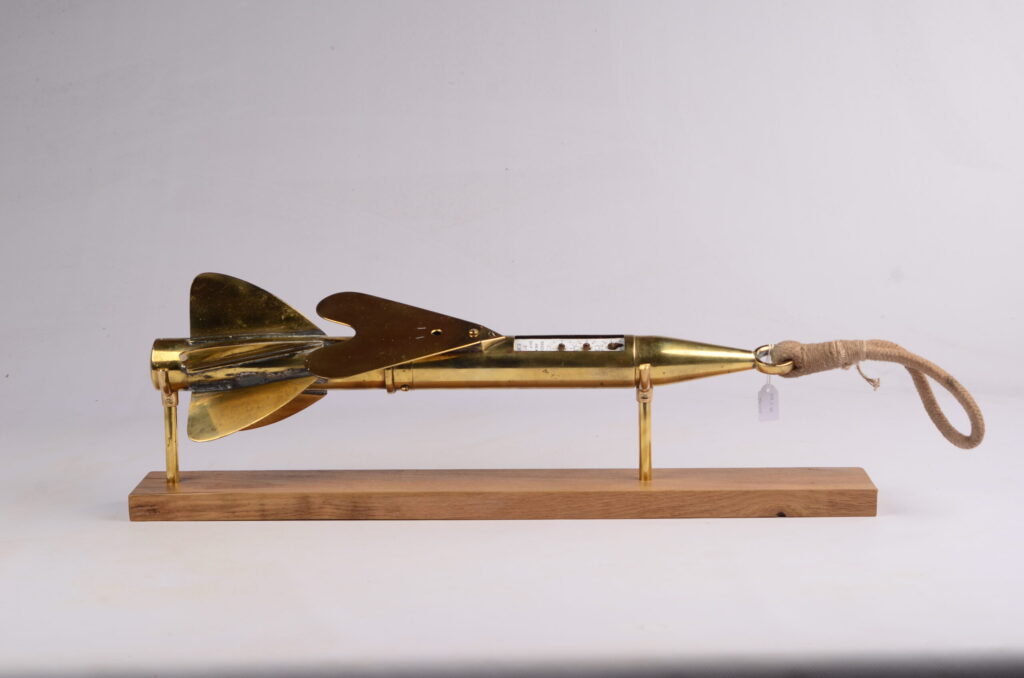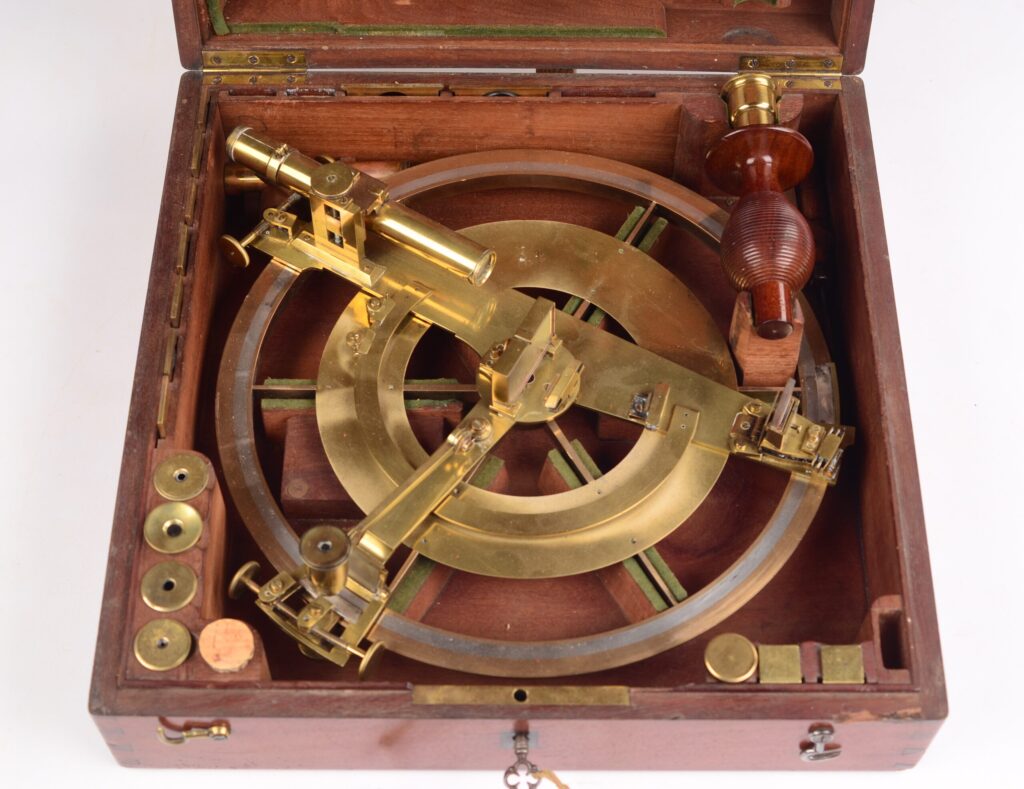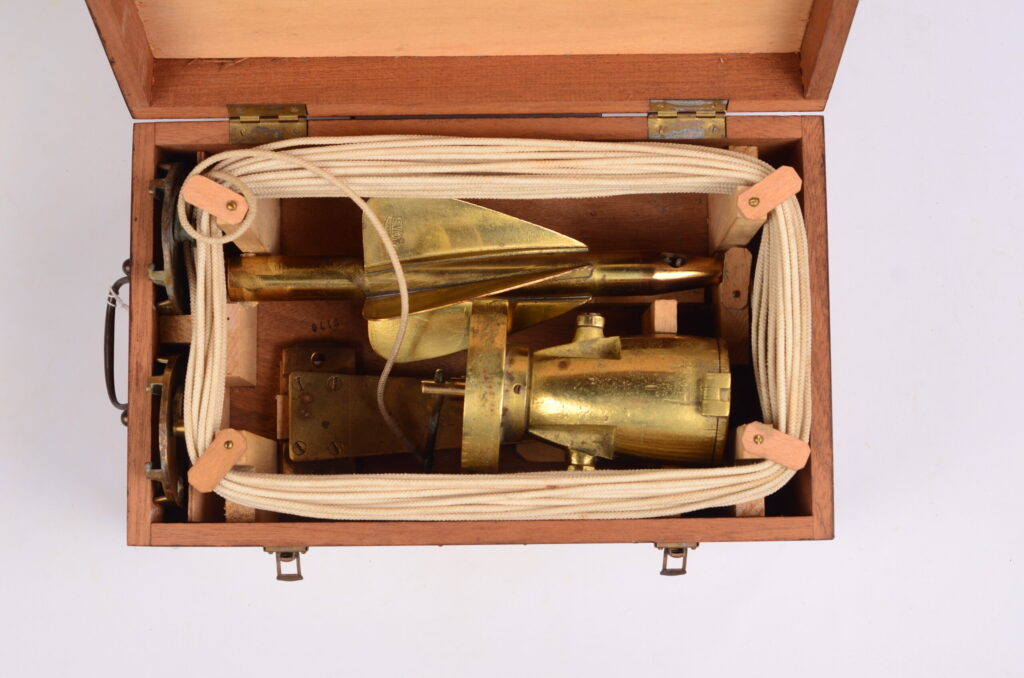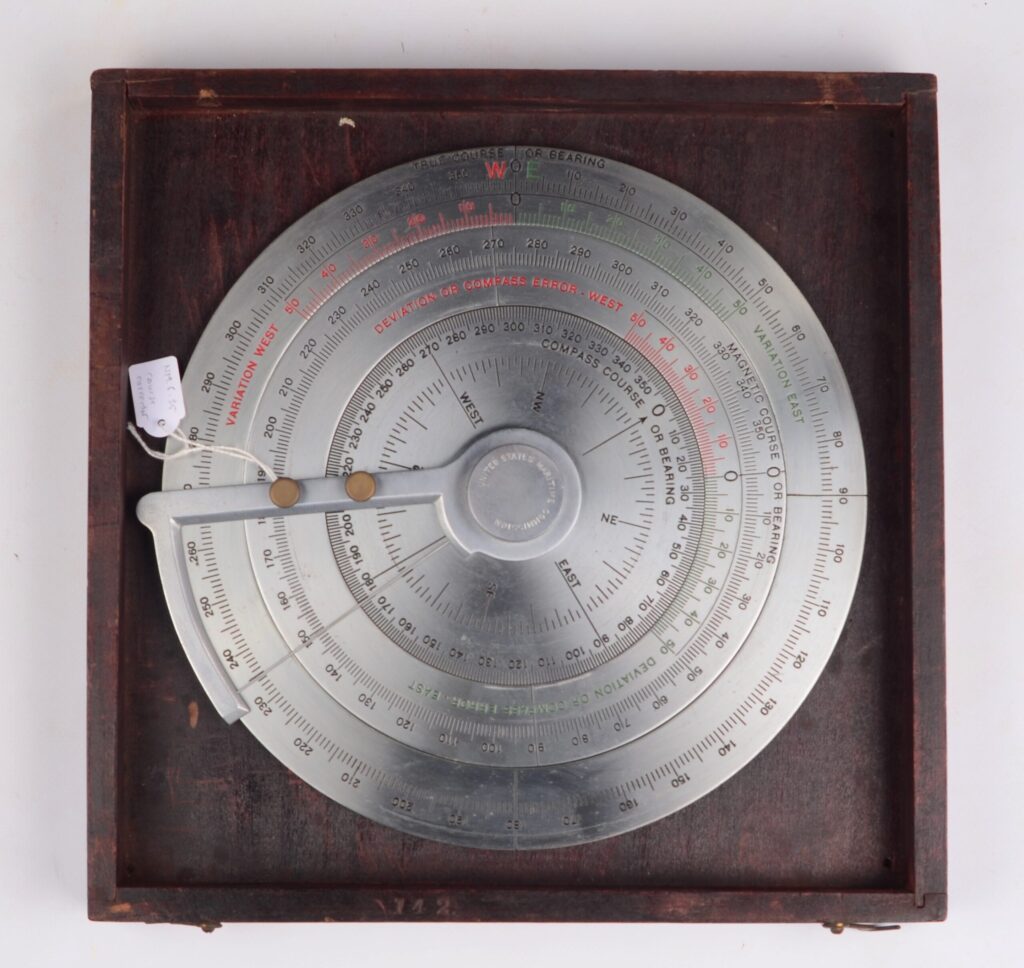Celestial Globe, Star Finder – Hughes, London, ca. 1920
Making position by observation of stars is done at twilight. With partly cloudy skies it can be difficult to find the right stars. This star globe helps with it. In the lid of the box there is a paper label with instructions for use. The wooden deck box of mahogany is brass-hinged and dovetailed. On…
Read MoreFour Chart Leads
Catalogue: BK.1-21 Date: ca. 1930 HD: 13×70 mm Signed: not signed Origin: unknown Condition: perfect
Read MoreEarly brass Stadimeter, WWI era – Keuffel & Esser Co, New York, 1918
Early stadimeter made of brass in full working order. It’s complete with box of mahogany and adjustment instructions in the lid. That the instrument is made of untreated brass, the case is made of mahogany and the no. 352, indicates that it is a very early instrument. Felt has not yet been used. The stadimeter…
Read MoreWrought iron grappling hook with line
Wrought iron grappling hook with line. An old plumb line was used for the line. The colored markers are still present. Catalog: MA.2-15 Date: 19th century L hook: 28 cm, line about 10 meters Signed: not signed Origin: unknown, probably France Condition: perfect
Read MoreVery rare Massey Harpoon log A1 – Massey, London, ca. 1890
From the 17th century onwards people had made many attempts to devise a mechanical log which would automatically record the ships distance done. Edward Massey invented a mechanical log in 1802 with four blades which was used by the Admiralty from 1807-1815. When dragged behind the ship the log vins rotates and the revolutions were…
Read MoreReflecting or Borda circle – Schwartz, Lenoir, Paris, ca. 1840
Circle sextant, Borda circle, reflecting circle, circumferator, repeating circle, this instrument is known among several names. In Paris Chevalier de Borda published a description of his instrument in 1787. The instrument can measure angles greater than 180 degrees. At sea, it is used in determining lunar distances.
Read MoreRare taffrail log in case – Vion, Paris ca. 1950
A ship-log records the distance travelled through the water. With the time in hours between the observations, it gives the ship’s speed in knots. A very rare and complete yachting taffrail log. Hardly used. With clock, line, rotator, sinker weight and two shoes in a mahogany case. The log is fixed on a shoe…
Read MoreNaval Course Corrrector – USMC, WWII era
Course Corrector of the United States Maritime Commission fixed in original wood box. The divice is a ten inch disk of three rings and has an indicator arm with two thumb screws. The device is used to assist calculating true, magnetic or compass course base upon variation and deviation. Catalogue: NM.6-35 Date: 1940 –…
Read MoreRare Star Finder, Celestial Globe – Cary, London ca. 1896
Making position by observation of stars is done at twilight. With partly cloudy skies it can be difficult to find the right stars. This star globe helps with it. In the lid of the box there is a paper label with instructions for use. Inventor of this outil is Vincent John English. The wooden…
Read More